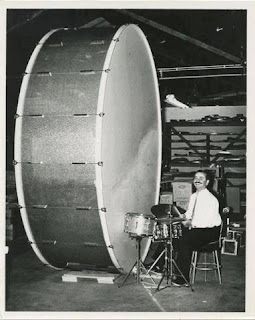If you are truly interested in providing the best performance experience possible for your audience you will begin by making your stage mix the best it can be. One of the most common issues is stage volume both from the performer's position and from the FOH. In applications with sound reinforcement (casually referred to as PA) bands with amps and/or cabinets too big for the room overpower the FOH and the overall mix is just trash plain and simple. A good part of this is a holdover from back in the days where the band's individual amps were the actual sound system - before the days of good sound reinforcement. These days even small venues usually have a good sound system thereby making this practice totally unnecessary.
The first thing bands can do to improve stage mix is to point their amps and cabinets either across the stage from opposite sides of the stage or point them backwards toward the drummer. This helps get the stage sound out of the FOH sound which makes the FOH sound engineer's job infinitely easier. Make the sound engineer's job easier and you make having an excellent FOH mix a probability rather than a crap shoot. Think about it - what is one thing people always talk about when asked about a concert. "The band was incredible - they sounded better than the album" or "they sucked - I couldn't hear a thing." Which one of these do you want to be and which one do you think the audience would consider seeing again? Far too many bands set up with their cabinets facing out into the audience because they have this image ingrained in their heads.
Unless you are playing arenas pointing your cabinet out at the audience is only going to overpower the FOH. If you are playing arenas you already know this and do not need to read any further.
The second step is to either elevate your cabinet to hip or chest level or angle it up at your head where your ears are located rather than pointing it at your ankles where your ears are not located. As a bassist I prefer elevated cabinets to angled as this method worked miracles for me being able to hear myself on stage. This immediately takes care of volume issues. I have had guitarists whine that when they point their cabinets at their heads that it is too loud or that they don't want to damage their hearing. Turn it down Einstein. Interestingly enough if you can convince everyone to point their cabinets at their heads the volume wars cease to exist - getting everyone on board is another matter entirely.
Another thing that really helped me was stepping back from the cabinets a bit. I found that there are sweet spots on the stage where I can hear myself very well in relation the drummer and the guitarist. Guitar is an interesting thing in that I can hear it anywhere I am on the stage but bass is a strange creature due to the length of the sound waves produced.
It all boils down to being honest with yourself about why you are on stage. Sure I am there because I truly love performing live but the real reason I am there is to provide the best musical experience possible to the audience. For me that means canning the ego and the attitude along with trusting that the sound engineer is there to do their job the same as me. Pummel the audience with my bass rig on top of what the FOH is already providing is arrogance - not performance.







